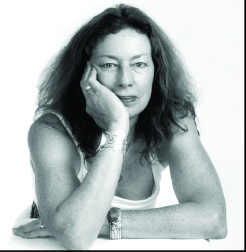In its December 2014 magazine, National Geographic provided a link to an initiative exploring the future of food (natgeofood.com). Revisiting this issue over five years later, its relevance is powerfully prescient and enlightening. Findings have shown that there is enough food to go around, and that global undernourishment shouldn’t exist. The world as a whole doesn’t have a food deficit, but individual countries do. So, what then causes hunger?
A map in the issue illustrates possible reasons: natural disasters (Haiti), erratic weather (Bolivia), civil war (Central African Republic), economic swings (Tajikistan), poor infrastructure (Zambia), and restrictive leaders (North Korea). Missing from the map’s reasons for disruptions known to cause food insecurity was the sudden spread of a catastrophic global pandemic. And as the world is all too aware today, a deadly strain of coronavirus playing havoc with the health of the world’s estimated 7.8 billion people is also disrupting existing global food chains and delivery systems.
Following the spread of a deadly coronavirus pathogen from its source in Wuhan, China to countries and continents around the world, the global nature of the pandemic has brought the threat of food insecurity into critical focus. The first confirmed case of the virus known as COVID-19 in the United States was in January 2020. In the four months since then, businesses across the country have had to close, schools and universities have gone to online teaching, and record numbers of workers laid-off or furloughed have filed for unemployment. For an increasing number of Americans, food insecurity has become personal.
With much of our nation still following directives to stay at home, we are faced with how to feed ourselves and how to help feed others who are struggling to put food on the table.
Ironically, while facing food scarcity challenges, many people around the world have been rediscovering the joy of food. Interestingly enough, the cover title of NG’s December 2014 food issue was “The Joy of Food.” Maps highlight the reality that food is distributed unequally among nations. At the same time, NG contends that food has brought family and friends together throughout history in countries around the world.
The issue begins by asking readers, “What is it about eating that brings us together?” According to NG writer Victoria Pope, “The sharing of food has always been part of the human story. From Qesem Cave near Tel Aviv comes evidence of ancient meals prepared at a 300,000-year-old hearth, the oldest ever found, where diners gathered to eat together. Retrieved from the ashes of Vesuvius: a circular loaf of bread with scoring marks, baked to be divided. ‘To break bread together’—a phrase as old as the Bible—captures the power of a meal to forge relationships, bury anger, provoke laughter.”
Food writer M.F.K. Fisher lived through a period of food deprivation due to global warfare in the 1940s. In her classic book, “The Art of Eating,” she reveals her thoughts on what it is about eating that brings people together. “With good friends…and good food on the board…we may well ask, when shall we live if not now?” In other words, a shared meal binds people together, wherever they are in the world, and no matter how bountiful or sparse the provender.
In his New Yorker Sunday Archive (May 3, 2020), editor David Remnick shared past articles from the magazine about cooking at home. “Everyone has an idea of home cooking, and everyone’s idea is different. Like Proust’s Madeleine, the radical simplicity of home cooking has a way of evoking powerful feelings and recollections. Some of us conjure images of days spent in the kitchen with our families, whereas others contemplate the improvisation of new meals or recipes from a favorite cookbook. The common thread is that certain tastes can make us feel, at least for the moment, that all is right with the world.”
In that spirit, a small group of friends who love to cook saw in cooking a way to raise donations from the community to help people struggling to feed their families. While we each receive any number of prompts to donate, this project offers something different and interactive for the donor in stressing the power of food to feed the spirit. With the help of a gifted MU student and Zoom technology, the group worked from home to create an online food blog called “The Common Ingredient.”
Recipes and comfort food stories were then collected from passionate cooks across our community eager to contribute to the effort. Their collective family food stories are now available online at www.thecommoningredient.com. To help feed those in need at this unprecedented time of food insecurity, visitors to the website are encouraged to use a recipe and make a donation to one of three local non-profits—The Food Bank for Central and Northeast Missouri, the Boys and Girls Club of Columbia, and the Missouri Restaurant Association Workers Benefit Fund.
From the beginning of time, a common ingredient that has connected us is love. We are all in this together. There has never in our lifetime been a better time to come together and remember that there is joy to be found in sharing food with others, wherever you break bread around the planet.
Cathy Salter is a geographer and columnist who lives with her husband, Kit, in Southern Boone County at a place they call Boomerang Creek.









Facebook Comments